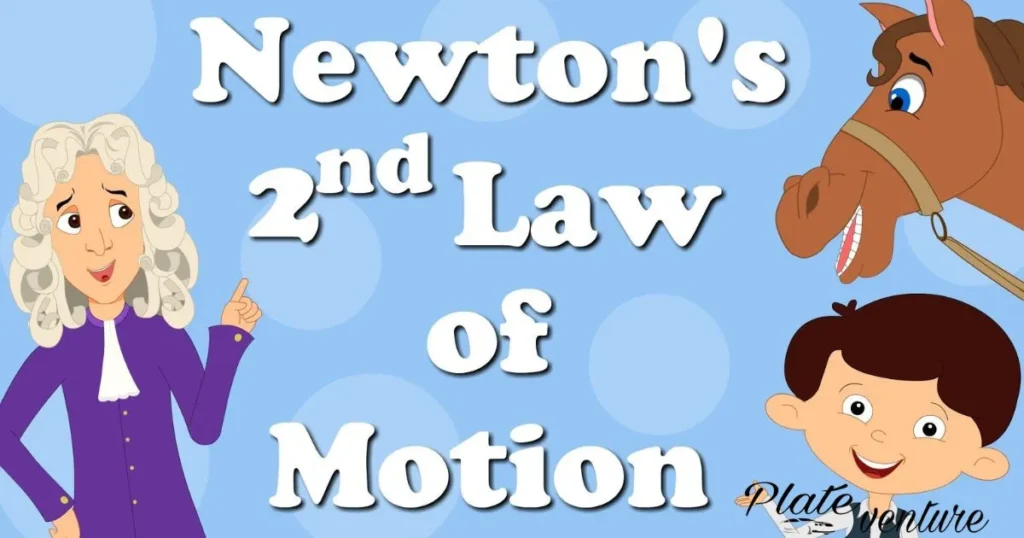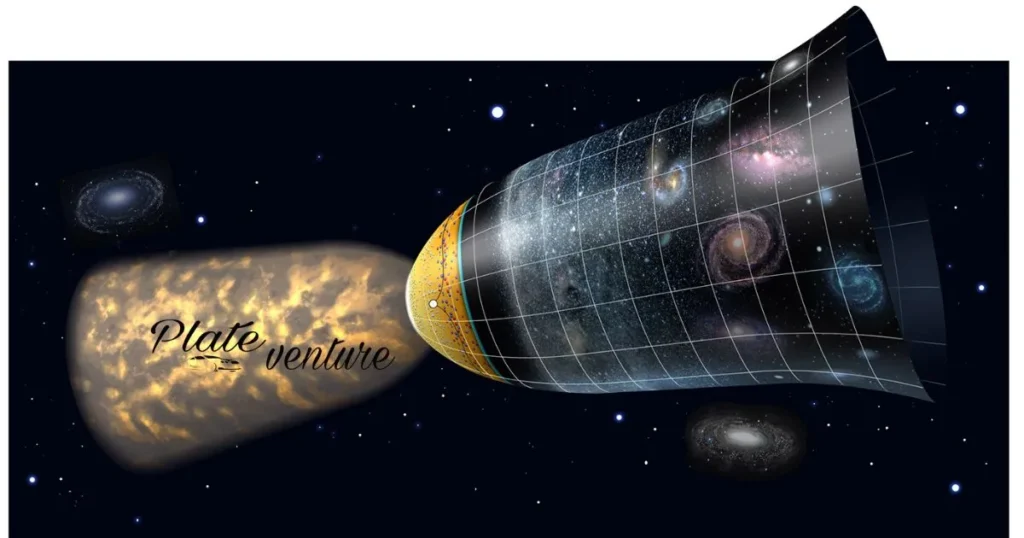The laws of the universe are the basic principles which govern physical events in the universe. They describe how different physical systems behave and interact. The laws of gravity, motion, and thermodynamics are some examples which apply everywhere in the known universe.
“What Are The Laws Of The Universe?” This is a fundamental question that humanity has sought to understand for millennia. From ancient philosophers to modern scientists, people have strived to uncover the deeper rules that govern our world and everything within it.
The laws of the universe are invisible rules that exist throughout space and time. They determine how physical systems like planets, stars, and all forms of matter behave. Understanding the laws of the universe allows humanity to harness physical processes and apply scientific knowledge to technology. Further research continues to reveal new insights into what defines our existence.
What Is The Gravitational Law?
Gravity is the force that attracts a body toward the center of the Earth, or toward any other physical body having mass. It causes things to fall, keeps the planets in orbit, and holds together the components of everything from comets to black holes.
How Does Gravity Work?
Gravity works by causing objects with mass to attract each other. The more mass an object has, the stronger its gravitational pull. Gravity makes objects fall to the Earth unless there is a supporting force like the ground holding them up. It operates over immense distances in space to hold galaxies, stars, and planets in their courses.
What Is The Theory Of Relativity?
The theory of relativity proposed by Albert Einstein changed scientists’ understanding of space, time, gravity, and the universe. It suggests that the laws of physics are the same for all observers, regardless of their motion or frame of reference. Time passes more slowly the closer one gets to the speed of light.
What Evidence Supports The Theory Of Relativity?
Evidence that supports relativity includes observations of phenomena such as gravitational lensing, effects measured by atomic clocks on airplanes and satellites, and the gravitational redshift of light and radio waves from distant galaxies and nebulae. Relativity also explains odd properties of black holes that were predicted mathematically.
How Far Does Gravity Reach?
Gravity reaches throughout the entire universe through infinite space and time. While it weakens significantly over immense distances, gravity has an infinite range and every object in the universe attracts every other object, however minutely. Even weak intergalactic gravity shapes the formation and movements of galaxies, galaxy clusters, and astronomical structures over billions of light years.
The Laws Of Motion

Sir Isaac Newton discovered three fundamental laws of motion that describe the relationship between a body and the forces acting upon it, and its motion in response to those forces. They have been experimentally confirmed to explain why objects move the way they do and are still used today.
What Are Newton’s Laws Of Motion?
Newton’s Laws of Motion are three basic laws that helped shape understanding of classical mechanics: 1) An object at rest stays at rest and an object in motion stays in motion with the same speed and in the same direction unless acted upon by an unbalanced force. 2) The acceleration of an object as produced by a net force is directly proportional to the magnitude of the net force, in the same direction as the net force, and inversely proportional to the mass of the object. 3) For every action, there is an equal and opposite reaction.
What Is Newton’s First Law Of Motion?
Newton’s First Law of Motion, also called the law of inertia, states that an object at rest stays at rest and an object in motion stays in motion with the same speed and in the same direction unless acted upon by an unbalanced force. Inertia is the property of resistance to a change in motion of any physical object.
What Is Newton’s Second Law Of Motion?
Newton’s Second Law of Motion states that the acceleration of an object as produced by a net force is directly proportional to the magnitude of the net force, in the same direction as the net force, and inversely proportional to the mass of the object. This means if more force is applied, the object’s acceleration will increase, and if less force is applied, the acceleration will decrease.
What Is Newton’s Third Law Of Motion?
Newton’s Third Law of Motion states that for every action, there is an equal and opposite reaction. If object A exerts a force on object B, then object B exerts an equal but opposite force back on object A. In everyday terms, it explains why rocket engines can propel rockets forward – the exhaust is pushed backwards at high speed, which pushes the rocket forward by an equal amount.
How Do Newton’s Laws Govern Motion?
Newton’s Three Laws of Motion collectively describe the relationship between an object and the forces acting on it, and its motion in response to those forces. They are still used today to predict how forces will affect motion. The laws govern all forms of motion, from rocket launches to galaxies interacting under the force of gravity, providing a fundamental framework for mechanics.
The Thermodynamic Laws
Thermodynamics describes the relationships between heat, work, temperature, Lemon Law Apply To Used Cars and energy. Central to thermodynamics are four basic laws that govern any system involving thermal energy transfer and transformations.
What Is The Zeroth Law Of Thermodynamics?
The Zeroth Law of Thermodynamics establishes the concept of thermal equilibrium – it states that if two systems are each in thermal equilibrium with a third, they are also in thermal equilibrium with each other.
What Does The Zeroth Law State?
Simply put, the Zeroth Law states that if objects A and B are each in thermal equilibrium with object C, then A and B must be in thermal equilibrium with each other as well. This allows a concept of “temperature” to be ascribed to physical systems.
How Was The Zeroth Law Discovered?
The Zeroth Law was not explicitly stated until the 20th century but emerged from empirical observations of temperature as a physical property that could be measured and equalized between substances separated by adiabatic walls. Its designation as the “Zeroth Law” was coined in the 1920s.
What Implications Does The Zeroth Law Have?
It provides the theoretical underpinning for thermometry, allowing temperature to be assigned unambiguously and compared between objects and systems. This is crucial for understanding heat transfer and phase transitions.
What Temperature Measurements Rely On The Zeroth Law?
All temperature scales, including Celsius, Fahrenheit and Kelvin, rely on the Zeroth Law to define temperature operationally through thermometers in thermal contact. It gives scientific meaning and consistency to temperature readings.
The Quantum Mechanical Laws
At the subatomic scale, quantum mechanics governs how particles behave in ways unlike classical mechanics. Several fundamental quantum principles have profound implications.
What Is Heisenberg’s Uncertainty Principle?
Heisenberg’s Uncertainty Principle states that there is a fundamental limit to the precision with which certain pairs of physical properties of a particle, known as complementary variables, such as position and momentum, can be known simultaneously.
What Can’t Be Known Simultaneously According To Heisenberg?
Heisenberg concluded that it is impossible to simultaneously know a particle’s exact position and momentum. The more precisely one property is measured, the less precisely the other can be known.
How Was The Uncertainty Principle Discovered?
Heisenberg formulated the principle in 1927 from his matrix mechanics, driven by difficulties in applying Quantum concepts and paradoxes of measurement. It arose from attempts to describe electron behavior in atoms using the new Quantum theory.
What Applications Rely On The Uncertainty Principle?
It is crucial for technologies like electron microscopes, MRI machines, CD players, dynamic random-access memory in computers, and many experiments probing subatomic physics scales. Quantum effects also play roles in nuclear power generation.
What Do Virtual Particles Say About The Uncertainty Principle?
Virtual particles appearing in empty space according to Quantum Field Theory illustrate the principle – their physical properties can only be uncertain within Heisenberg limits, as they exist for very short times dictated by the energy-time uncertainty relationship.
The Cosmological Laws

By observing light from far galaxies with the greatest telescopes, astronomers have uncovered cosmological laws governing the structure and evolution of the entire universe.
How Does Hubble’s Law Describe The Universe?
Hubble’s Law states that the farther galaxies are from us, the faster they appear to be receding. It established that the universe is undergoing continual expansion on cosmological scales from an initial expansion starting over 13 billion years ago.
What Did Hubble Observe That Led To His Law?
In 1929, Hubble observed that light from distant nebulae was consistently redshifted, indicating the objects were moving away from us. Redshift correlated linearly with distance, the foundation of his namesake law.
Hubble’s Law Relate To The Expansion Of The Universe
| Hubble’s Law | Expansion of the Universe |
| Hubble’s Law states that the farther galaxies are from us, the faster they appear to be receding. | The universe is expanding, carrying galaxies farther apart. |
| Redshift in light from distant galaxies increases with distance. | Redshift occurs as space itself stretches, increasing the wavelength of light. |
| Higher redshift means higher recessional velocity according to Hubble’s Law. | Greater distances between galaxies mean more space has expanded between them. |
| The recession speeds depicted by Hubble’s Law increase linearly with distance. | The expansion of the universe proceeds constantly at a rate proportional to distance. |
| Hubble’s observations and calculations established the law. | Hubble’s Law provided direct observational evidence the universe is expanding. |
| Recession speed is calculable from redshift and distance. | The expansion behavior on cosmological scales is consistent with predictions of the big bang. |
What Evidence Supports The Expanding Universe Model?
Additional evidence comes from observations of the cosmic microwave background radiation, distant supernovae accelerating away even faster consistent with expansion, and statistical analyses of galaxy distribution on the largest scales.
What Are The Implications Of An Expanding Universe?
It implies the universe began in a hot dense state and has been expanding and cooling ever since in the big bang 13.8 billion years ago. The observed expansion also informs calculations of cosmological parameters like the age and rate of expansion of the universe.
Frequently Asked Question
Gravity Shapes Stellar Movements
All masses attract each other with a force proportional to their mass and inversely proportional to the distance between them.
Energy Cannot Be Created Or Destroyed
The total amount of energy in the universe always remains the same according to the law of conservation of energy. Energy may change forms but it does not disappear.
Matter Cannot Be Created Or Destroyed
Similarly to energy, the total amount of matter in the universe is fixed and unchanging according to the law of conservation of mass. Matter may be rearranged but not created from nothing or destroyed.
Causality Prevents Effects Before Causes
The laws of cause and effect maintain that everything occurring in the universe has a cause. Nothing happens without an antecedent physical event or process to set it in motion.
Time Has Directionality
All processes unfold in time from past to future. While time may be relative, the directionality or “arrow” of time cannot run the other way according to modern physics theories.
Conclusion
The fundamental laws of the universe such as conservation of energy, gravity, and causality are what give the cosmos its remarkable order and predictability on both vast and minute scales. By understanding these governing principles, humanity has gained profound insights into the workings of the material world around us—from the motions of planets orbiting stars to the interactions within cells.
As science continues to peel back new layers of reality’s mysteries, we see ever more clearly how order pervades creation through the reliable harmonies of its laws. Although deeper questions will always remain, the consistency of the laws seen throughout the observable cosmos hints that their dominion encompasses regions far beyond.
As our perceptions broaden through study of gravity’s pull on galaxies, energy’s transformations, and causality’s progression of effects from causes laid down at the universe’s beginning, we catch glimpses of the elegant originary design pervading this splendid world.
The very functioning of the lawful order shaping our existence inspires mankind’s innate quest for comprehension of nature’s majestic tapestry, woven since the dawn of time by the guiding threads of the immutable laws of the universe.








